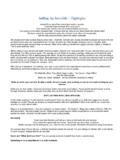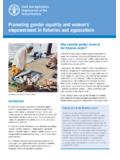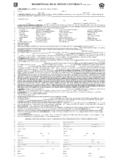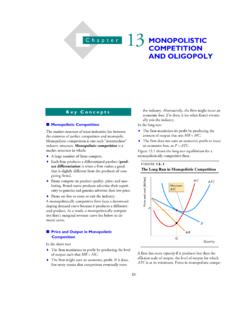Transcription of Human Trafficking - - RN.org®
1 Human Trafficking Developed October, 2018, Expires October, 2020 Provider Information and Specifics available on our Website Unauthorized Distribution Prohibited 2018 , , , LLC By Wanda Lockwood, RN, BA, MA The purpose of this course is define Human Trafficking and to outline the risk factors, types, warning signs, screening, methods of approach, and resources available to provide assistance and services to victims. This course meets the Florida requirements for a 2-unit course of Human Trafficking .
2 Upon completion of this course, the nurse should be able to describe: Describe at least 6 risk factors for becoming a victim of Human Trafficking . The 4 primary types of Human Trafficking . List general indicators (warning signs) that a person may be a victim of Human Trafficking . Describe public and private social services available for rescue, food, clothing, and shelter referrals. List the hotlines for reporting Human Trafficking . Describe screening questions and validated assessment tools for identifying a Human Trafficking victim Discuss procedures for sharing information related to Human Trafficking with a victim.
3 List referral options for legal and social services. The one constant in victims of Human Trafficking is fear. They fear those who control them, they fear trying to break away, they fear going without the drugs that keep Purpose Goal Introduction them enslaved, they fear losing the family created by the traffickers, the fear ICE, and they fear the police, who often arrest them for crimes they are forced to carry out, such as prostitution, despite safe harbor laws that have been passed to protect victims of Trafficking .
4 Human Trafficking , a modern-day form of Human slavery, is a $150 billion global business with an estimated 21 million victims that include children, adolescents, and adults. The Trafficking Victims Protection Act (2000) defines severe Trafficking as sex Trafficking and labor Trafficking that involves force, fraud, or coercion=. Victims are exploited for forced labor, debt bondage, and/or commercial sex. While many victims are female, males are also victimized. In 2016, 7,572 cases of Human Trafficking were reported to the National Human Trafficking Hotline.
5 The states with the highest number of Human Trafficking cases in 2016 were (1) California, (2) Texas, and (3) Florida. Of cases reported, 6340 were female, 978 male, and 70 gender minorities. Adults made up 4890 cases and minors 2387. Out of the total, 1417 were identified as foreign nationals. While Human Trafficking and Human smuggling are separate crimes under federal law, Human Trafficking may also involves smuggling. Smuggling is the illegal transport of a person across a national border, such as from Mexico to the United States.
6 Smuggling is usually done with the consent of the person, who often pays the smuggler to help cross the border. Unfortunately, for many, the trip ends with the person in the hands of a trafficker. While in developing countries it is not uncommon for children to be kidnapped or sold into sex Trafficking , in the United States, children most vulnerable to commercial sexual exploitation are: Homeless or runaways LGBTQ African American Latino Those involved in the child welfare system Risk factors for becoming a victim of Human Trafficking FBI statistics shows that 52% of juvenile prostitution arrests are African American and a full 91% are African American or Latino.
7 The average age of child victims is 13. About 40% of homeless youth are LGBTQ and 25% of those overall and 50% of those who are gay or bisexual males are victims of commercial sexual exploitation. Substance abuse (drugs and/or alcohol) is another risk factor for Human Trafficking as the need for a constant supply of drugs to feed a habit keeps victims from seeking help. Substance abuse is present in between 40 and 85% of those selling sex. Foreign nationals who came to this country with legitimate visas and overstayed or illegal immigrants who crossed the border are especially at risk of becoming victims because they cannot safely go to the authorities for help without risking imprisonment or deportation, and they cannot apply for public assistance.
8 They are often forced into situations where they work for little or no wages for years on end or work as prostitutes. The majority of foreign nationals involved in Trafficking in the United States are from Mexico and East Asia. There are many different types of Human Trafficking . According to the International Labour Organization, 68% of victims are trapped in forced labor, 26% are children, and 55% are women and girls. Polaris estimates that there are hundreds of thousands of Human Trafficking victims in the United States although only about 4000 cases per year are identified per the Human Trafficking hotline.
9 Poverty, lack of education, and desperation often leave both children and adults with few options. Even if they could escape Human Trafficking , they may have nowhere to go but to the streets and no other means of supporting themselves. It is not unusual for young children to work grueling hours in developing countries where poverty is common. In September 2016, the Bureau of International Labor Affairs identified 139 goods produced by forced or child labor in 75 countries, including countries in the Middle East, Asia, and Africa.
10 Child labor is common throughout Mexico, and countries in Central and South Types of Human Trafficking Child labor America. Countries such as India, Bangladesh, China, and Thailand are notorious for using child labor. While laws, such as the Fair Labor Standards Act (FLSA) restrict the use of child labor in the United States, some states have lifted restrictions on child labor or established a lower minimum wage for minors, encouraging businesses to hire them. Agricultural employers are exempt from many provisions of the FLSA regarding minors, which accounts for child field laborers in many areas of the United States, especially immigrant children.

















